Содержание
- 2. The relations between North and South were close to a breaking point. In the presidential election
- 3. Inauguration of Abraham Lincoln:
- 4. 2. The Civil War (1861 - 1865) On March 4, 1861, Abraham Lincoln took the oath
- 5. The North The South A population of 22 mln people 9 mln people (3,5 of them
- 6. The Union armies suffered one defeat after another in the first year of the war. Each
- 7. On July 4, after much bloody fighting and a siege, Vicksburg surrendered to a Union army
- 8. The Civil War caused terrible destruction at home. Cities and farms lay in ruins. The dead
- 9. 3. The Years of Reconstruction On the night of April 13, 1865, crowds of people moved
- 10. Lincoln was succeeded as President by his Vice President, Andrew Johnson. The biggest problem – how
- 11. The former Confederate states passed laws to keep blacks in an inferior position – “Black Codes”
- 12. In March 1867, Congress replied by passing the Reconstruction Act – dismissed the white governments of
- 13. The use of violence and fear helped white racists to win back control of state governments
- 14. Martin Luther King (1929 - 1968)
- 16. Скачать презентацию
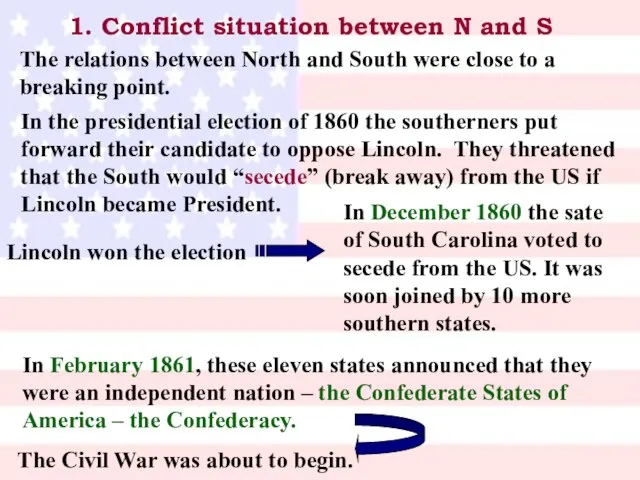
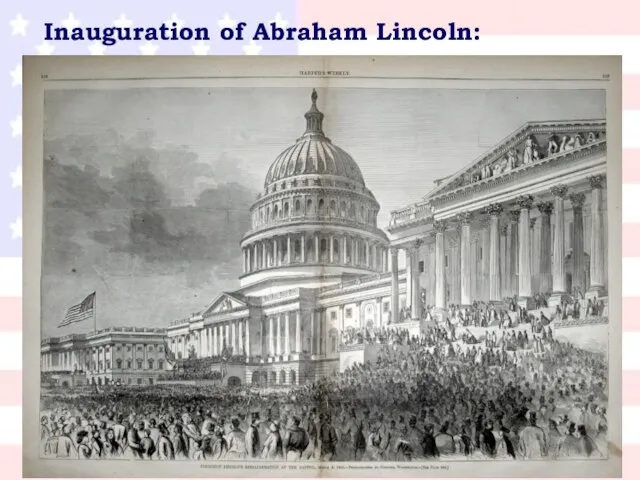
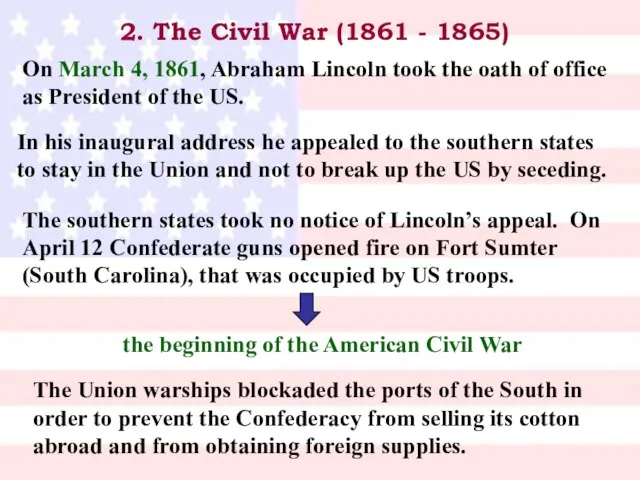

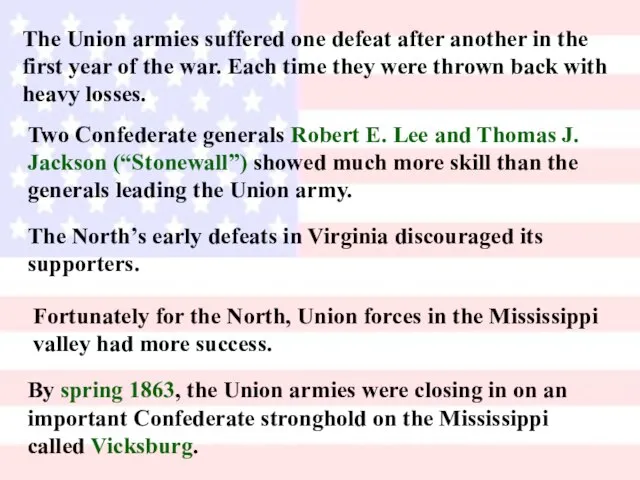

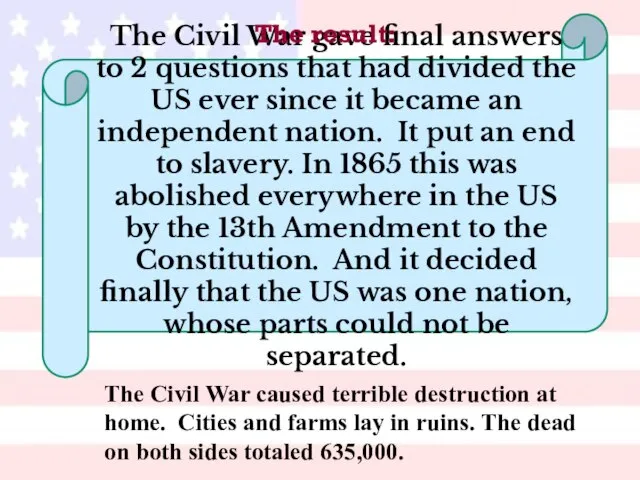
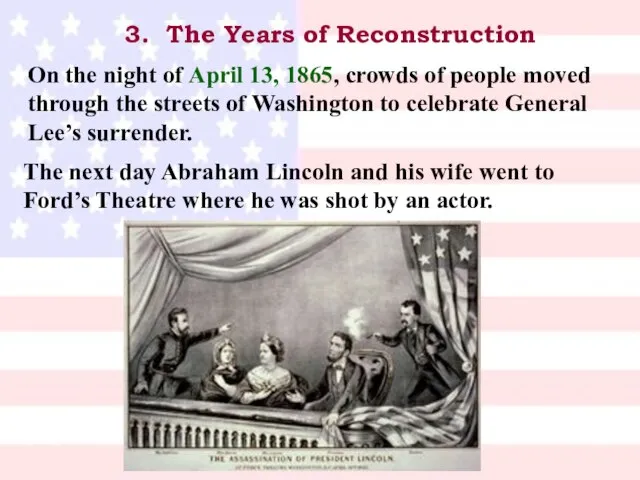
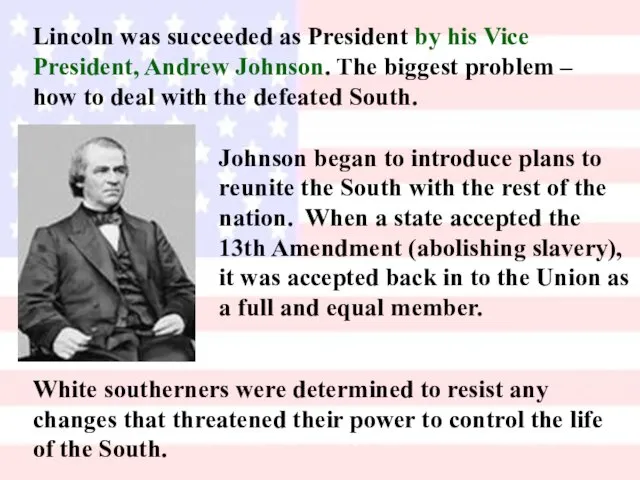
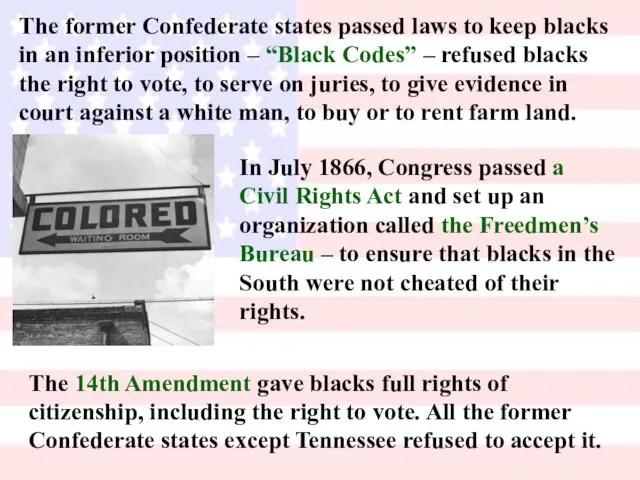
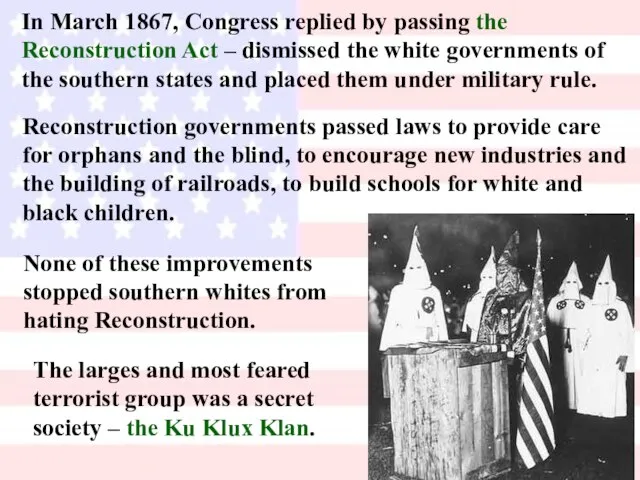
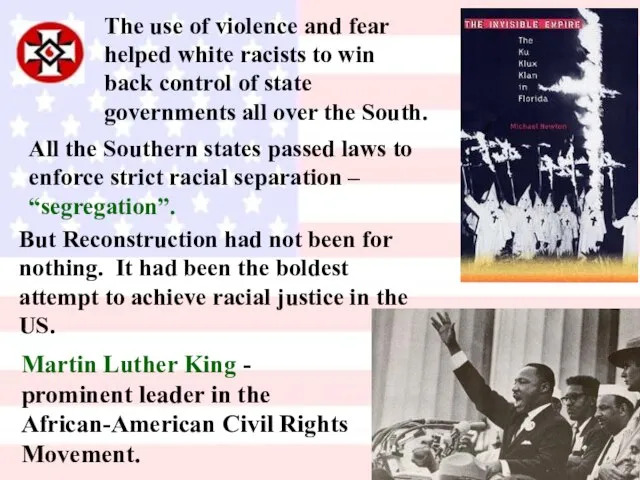
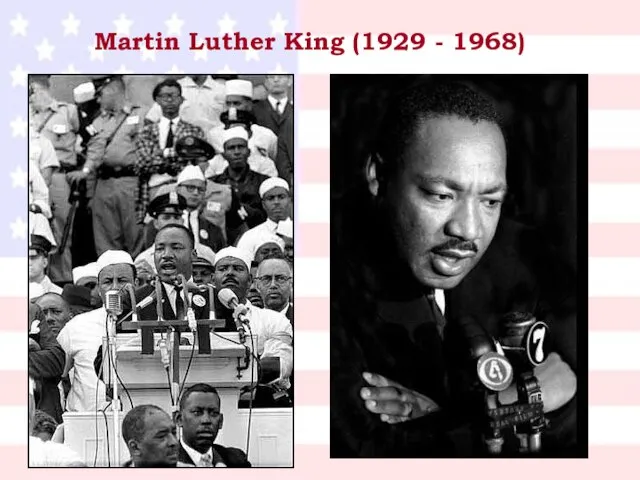
 Проект Жас оркен 2016
Проект Жас оркен 2016 Усуни и канглы
Усуни и канглы Транспортно-трасологические исследования для экспертных организаций
Транспортно-трасологические исследования для экспертных организаций 3
3 Научно-исследовательская деятельность учащихся
Научно-исследовательская деятельность учащихся Рисуем Сороку-белобоку
Рисуем Сороку-белобоку Как ИСПЫТАТЬ БОЖЬЮ ЛЮБОВЬ И ПРОЩЕНИЕ?
Как ИСПЫТАТЬ БОЖЬЮ ЛЮБОВЬ И ПРОЩЕНИЕ? Возврат налога
Возврат налога Международный фестиваль мотопутешественников «ЛИЦОМ К ОКЕАНУ» В четвертый раз летом 2006 года в южной части Приморского края пройд
Международный фестиваль мотопутешественников «ЛИЦОМ К ОКЕАНУ» В четвертый раз летом 2006 года в южной части Приморского края пройд Творческая работа по информатике«Калькулятор квадратных уравнений»
Творческая работа по информатике«Калькулятор квадратных уравнений» Главное в тексте –идея, основная мысль
Главное в тексте –идея, основная мысль Философия о смысле жизни и ценностях человека
Философия о смысле жизни и ценностях человека Сыбайлас жемкорлыкка карсы күрес туралы
Сыбайлас жемкорлыкка карсы күрес туралы Beseda_kak_metod_psikhologo-pedagogicheskogo_issledovania (1)
Beseda_kak_metod_psikhologo-pedagogicheskogo_issledovania (1) Наши соседи - белки
Наши соседи - белки Обучение технике перемещения на площадке
Обучение технике перемещения на площадке Создание первых кадетских корпусов. XVIII в.
Создание первых кадетских корпусов. XVIII в. Комерційна пропозиція від ТОВ Вінницягаз збут
Комерційна пропозиція від ТОВ Вінницягаз збут Международная школьная лига инженерных соревнований
Международная школьная лига инженерных соревнований ООО Инфорамационно -коммуникационный центр «КАМЕННЫЙ ГОРОД»
ООО Инфорамационно -коммуникационный центр «КАМЕННЫЙ ГОРОД» Роман А.А.Фадеева «Разгром»
Роман А.А.Фадеева «Разгром» Первые конфликты и кризисы «Холодной войны»
Первые конфликты и кризисы «Холодной войны» Интегрированный урок – путешествие по сказкам А. С. Пушкина в 6 классе
Интегрированный урок – путешествие по сказкам А. С. Пушкина в 6 классе Найдем max и min 1. условие min:, 2. условие max:
Найдем max и min 1. условие min:, 2. условие max: Qb7YJraESylUFGqMwqeA5A
Qb7YJraESylUFGqMwqeA5A Разрушители нашего здоровья
Разрушители нашего здоровья Презентация на тему Предлог как часть речи. Простые и составные предлоги
Презентация на тему Предлог как часть речи. Простые и составные предлоги Презентация на тему Никола Тесла
Презентация на тему Никола Тесла